Storks
Stork - der Storch
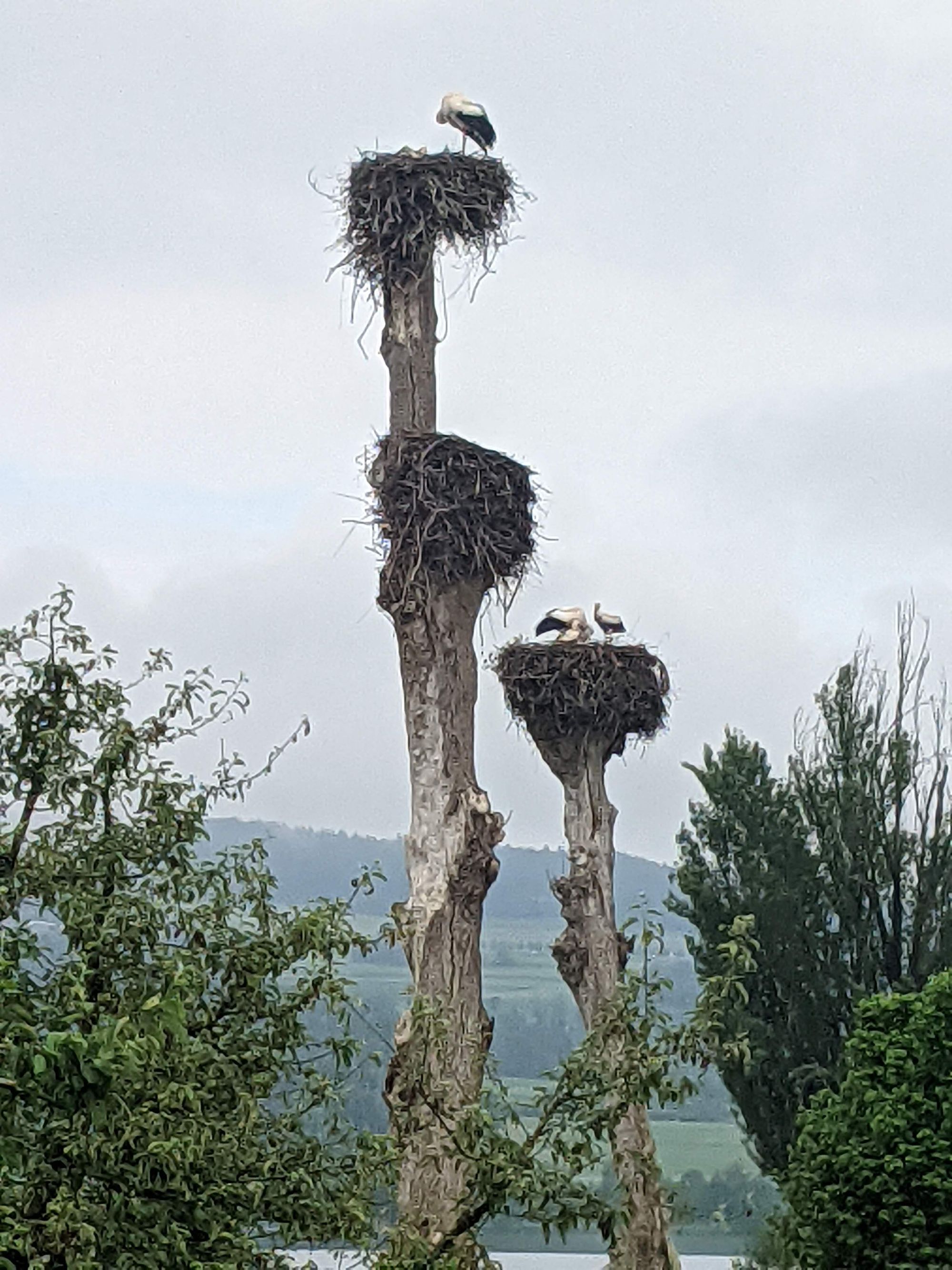
Of all the neighbors in our new area in Switzerland - the storks are my favorite. (For the record - we have very nice human neighbors). When we moved in - we knew there were storks in the area - but we didn't realize there was a mustering of them located here. Mustering as I found out is what one would call a group of storks.
As I have mentioned we live next to a nature preserve. Birds, fish and other species find themselves some safe spaces from human intervention, mostly. The storks in particular, have found this area as one of the local favorites to set up shop when not migrating south.
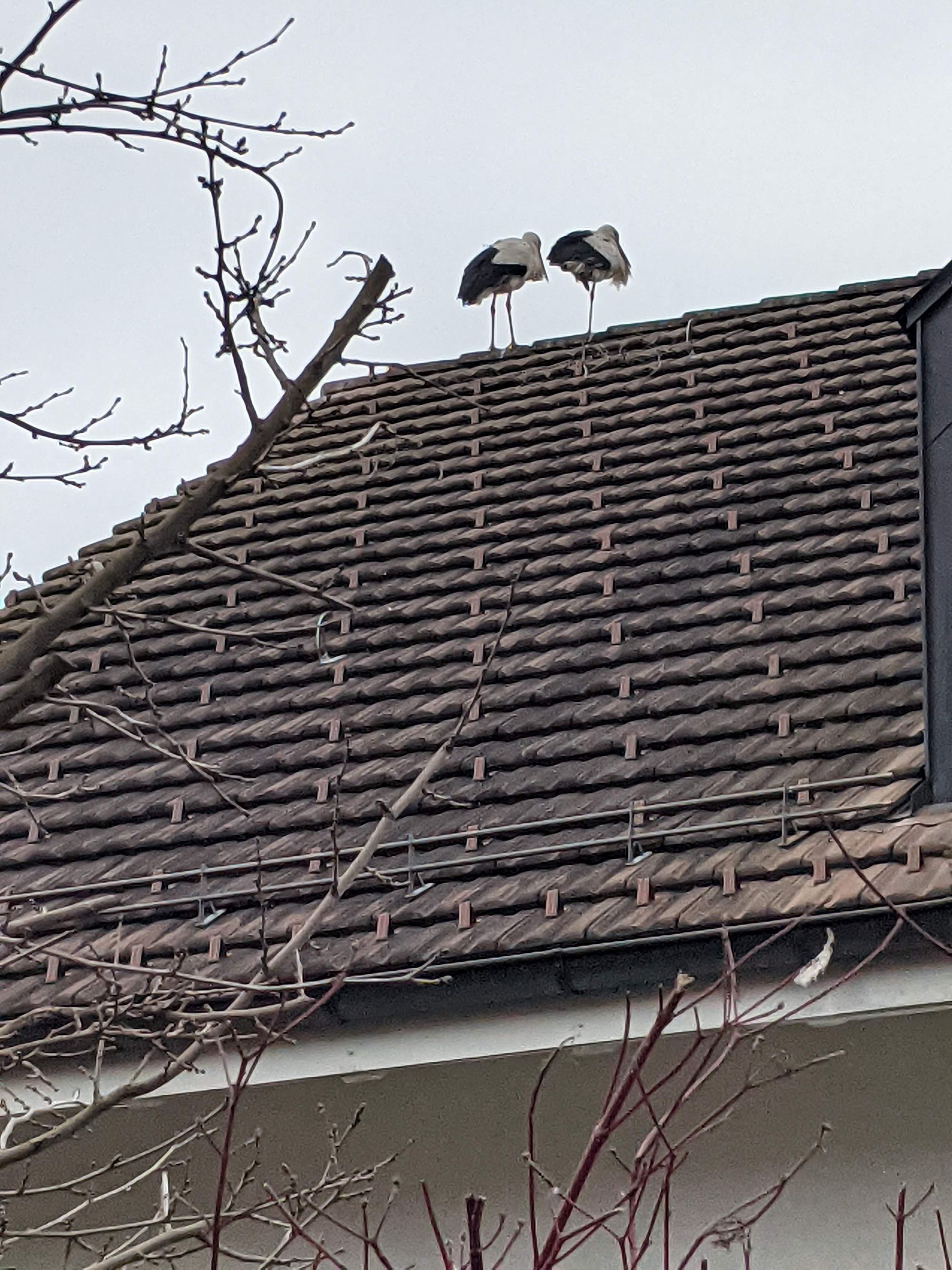
The storks that live here are the White Stork. They are white and have very distinct black feathers on the wings and shoulders. These birds are large - not as big as a flamingo but definitely big.
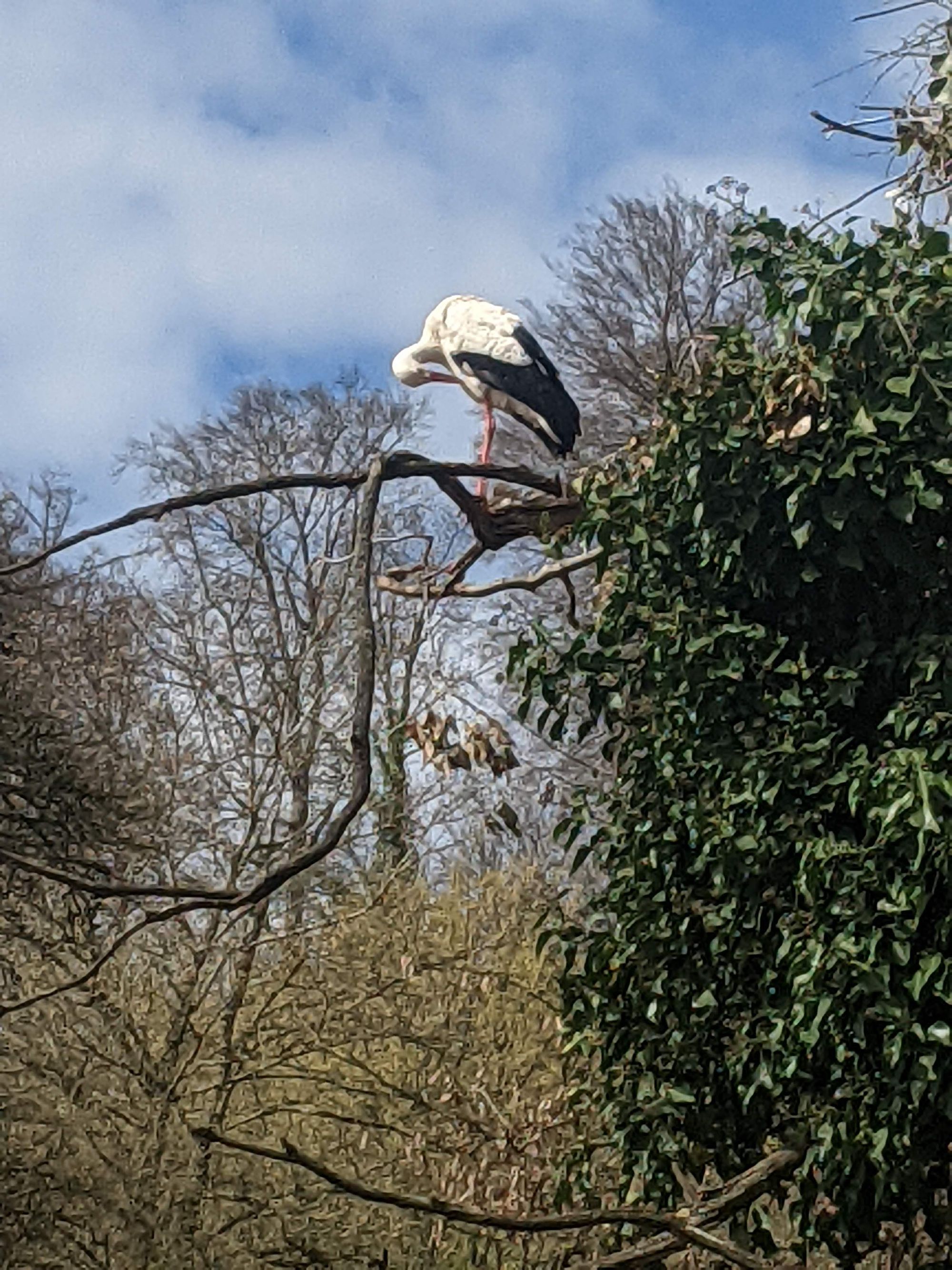
At one point the number of storks to the region were dangerously low. However, there is now a reintroduction program and the numbers are steadily increasing. And they are increasingly staying through the winter in some areas. (Or only flying to Spain and not all the way to Africa).
As I learn more about the bird and the rules around their protection I find it really interesting. For example - if a stork builds a nest on your building you can't remove it. So get ready for up to 2 tons resting on your roof or chimney! I will let you know how they handle nests on chimneys- if they can be relocated after breeding season. I know our town was doing some renovations in the city center and built a tower for a nest to be relocated so they could do some repairs.
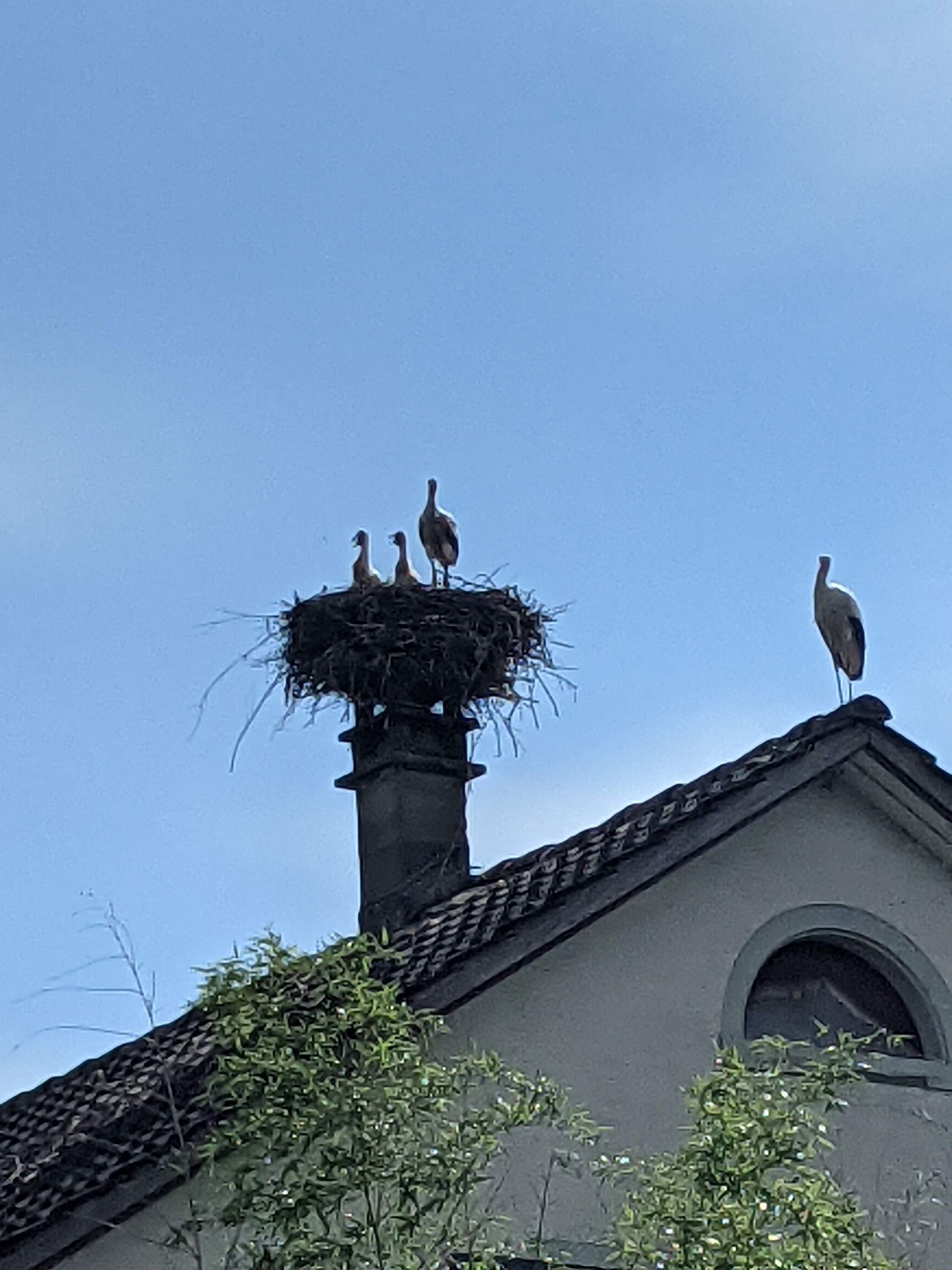
We currently have a nest on our building and in a tree that we can watch from our balcony. I am enjoying watching the different stages, from "courtship", to the storks sitting on the eggs, then little babies to all birds in flight.
One thing when the storks return from their winter holidays, and are scoping new home locations many try to discourage them from nesting on their building for a variety of reasons. We watched many people have shiny objects to discourage. An example is metallic balloons. As you can see in the picture below - the new residents of our building took the colorful balloons as house warming presents and decorated their nest with them.
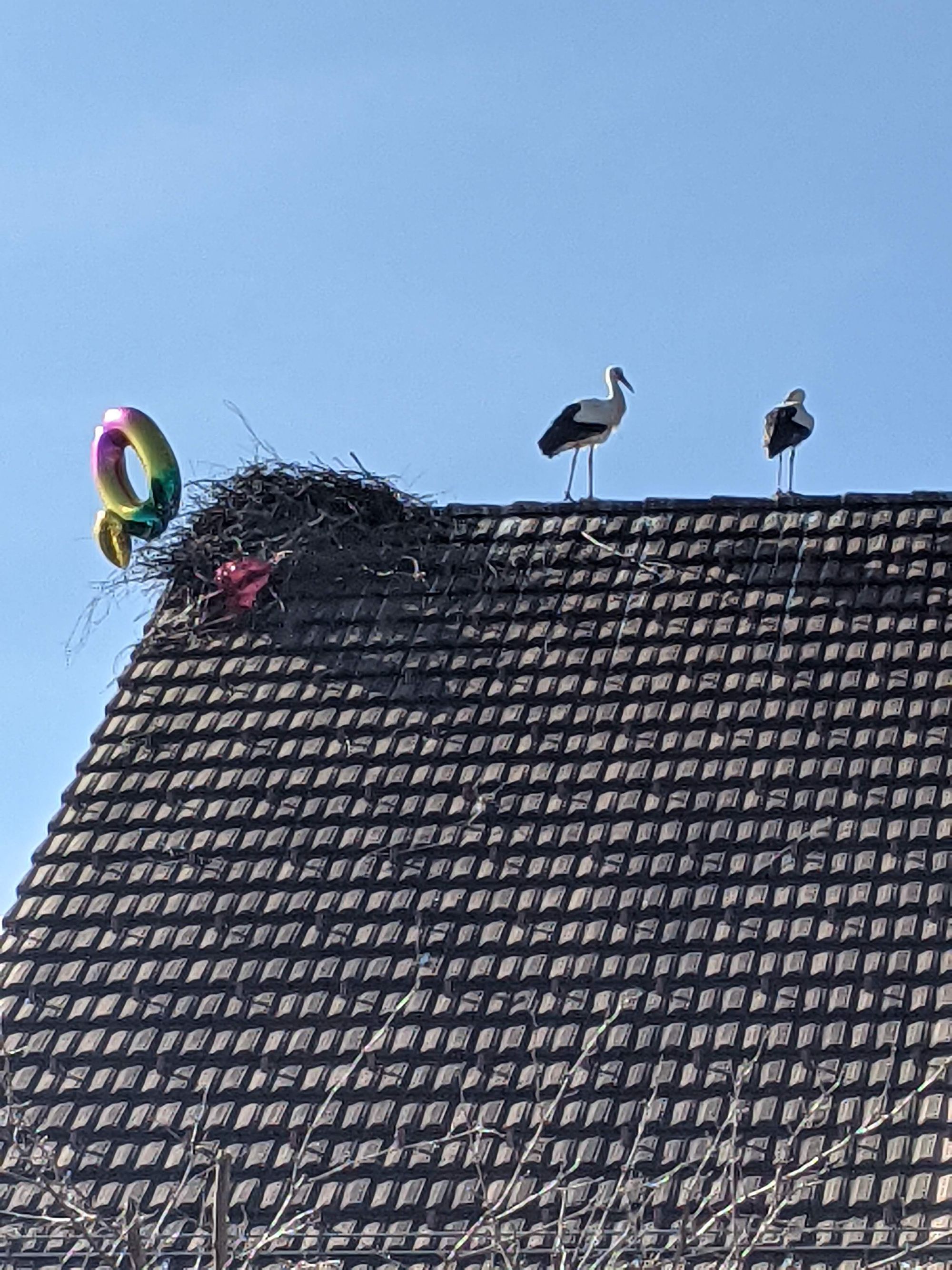
I will close with a few fun facts:
The pair in the nest share responsibilities of the babies.
Whomever gets to the nest first after migration claims it. Storks are connected to the nest vs looking for the partner from the year prior.
They are carnivores, which is why they prefer the marsh lands.
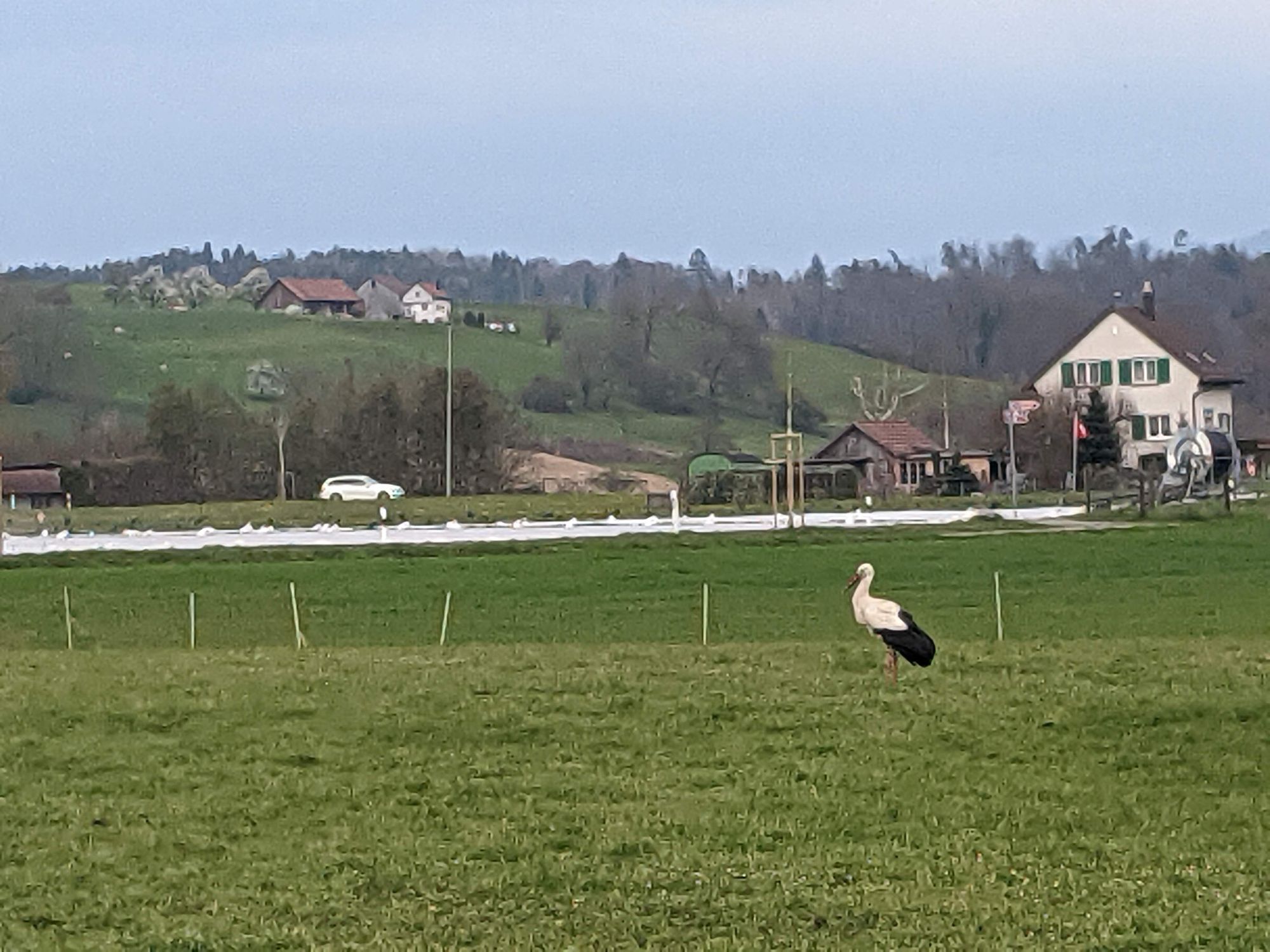
I cannot wait to learn more and see the changes during the seasons.